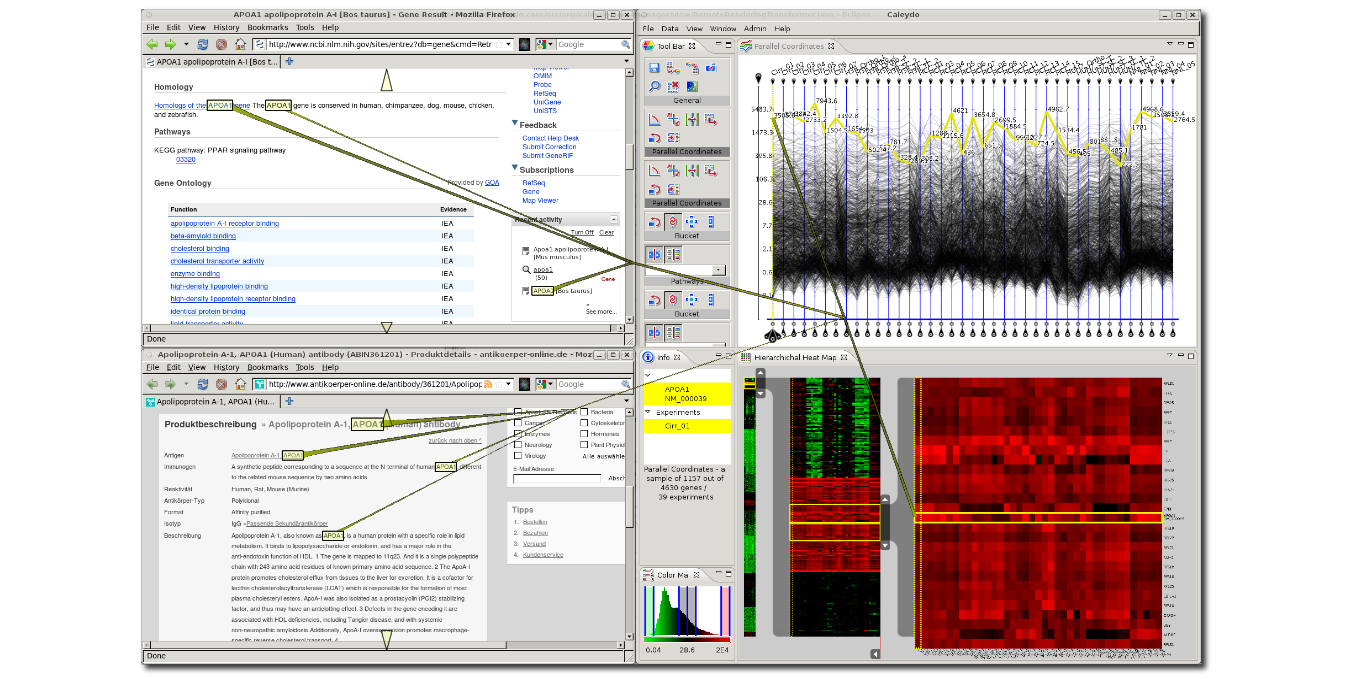
Abstract
Gaining insights by exploring massive, complex data is the grand challenge of Visual Analytics - the science of analytical reasoning. As heterogeneous data from different sources is being increasingly linked, it becomes difficult for users to understand how the data is connected, to identify what means are suitable to analyze a given data set, or to find out how to proceed for achieving a given analysis task. The analyst support a user needs is twofold: first, the analyst needs to be oriented within the information landscape - orientation support; and secondly, with orientation as a prerequisite, the user can be guided towards a specific analysis goal by following concrete recommended steps - guidance support. In order to realize analyst support on both levels, a unified representation of the knowledge about the infrastructure and the workflow to be performed is required. This dissertation proposes a new model-driven design process that effectively co-designs aspects of data, view, analytics and tasks. A workflow, composed of individual tasks, is used as a trajectory through data, interactive views and computational tools. Drawing upon information from a well-defined model and using the Caleydo visualization framework as infrastructure, this thesis introduces novel visualization techniques that are targeted at assisting users in terms of orientation. With this focus, three novel techniques are proposed - the Matchmaker, the Jukebox and the Bucket - all of which particularly address orientation support in the classic setups of visual analysis systems where one or multiple data sets are loaded in a multi-view system. The techniques presented rely on visual links as an additional visual cue - making the relations within and between the data sets more explicit. In addition to these traditional setups, further setup characteristics are discussed: first, a system that is targeted at orientation support in an analysis that spans multiple existing applications; and secondly, the analysis of heterogeneous data in a collaborative scenario. This thesis concludes with the Stack'n'flip system that utilizes the information captured in the model for realizing comprehensive analyst support on both support levels: orientation and guidance. The theoretical model as well as the visualization techniques in this work are motivated and demonstrated by means of real world data from the biomedical domain.
Citation
Marc
Streit
Guided Visual Analysis of Heterogeneous Data
Advisor(s): Dieter Schmalstieg, Heidrun Schumann
Graz University of Technology, PhD Thesis, March 2011.

